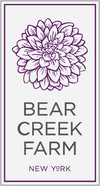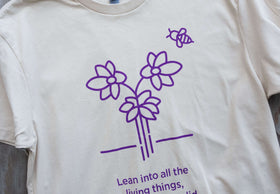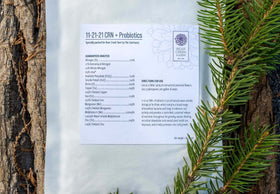“I am sitting near the brook under a tulip tree … a beautiful object – every branch, every leaf perfect. From the top to bottom, seeking the sweet juice in the blossoms, it swarms with myriads of these wild bees, whose loud and steady humming makes an undertone to the whole, and to mood and the hour.” Walt Whitman
Many of us hear a great deal about pollinator gardens generally, but we lack the knowledge to make their import actionable. Is it too late to ask? It is not. (It is never too late to learn.) Here at Bear Creek Farm, we nurture beauty from the ground up. In so doing, we love nothing more than the opportunity to invite those with an interest in growing flowers to come learn with us.
1. What is a Pollinator Garden? Pollinator gardens are gardens planted specifically with flowers to attract pollinators. These pollinators include bees, butterflies, hummingbirds, and other insects. According to the USDA, approximately three quarters of the world’s flowering plants, and as much as thirty-five percent of the world’s crops depend on pollinators for healthy reproduction. In addition to the critical role these gardens hold, they are also a space in which to play. Plant flowers that will bloom at different times thereby attracting necessary pollinators on an ongoing seasonal basis. Flower growers support local ecosystems - feeding the food chain in a macro sense - by creating a continuous source of nectar for pollinators.
2. Why are Pollinator Gardens important? Pollinators are critical to healthy ecosystems, creating botanical diversity to produce food. Simply put, without pollinators many plants would fail to reproduce and disappear. These gardens maximize the chance of healthy pollinator populations being maintained - thereby enabling agrarian communities to succeed. Remember that the food we love - such as apples, almonds, and tomatoes rely upon pollinators. These gardens serve as a firewall against the harmful effects of pesticides. When local gardeners take up trowels in support of pollinator gardens, they are working in support of populations which are facing declining numbers due to habitat loss and pesticide use.

3. A Field Guide: What should I plant in my pollinator garden? There are many flowers from which to choose when considering how to plant a pollinator garden. Among the most important consideration is where one lives. The use of native plants is often advisable, as flowers native to a specific region are often more resistant to fungi, pests, and other encroaching threats. Though we are providing a starter list of star attractants here, many flowers that are brightly colored, have a strong scent, and produce large amounts of nectar are favored by pollinators. Look for physical features that make it easy to access the nectar and pollen, such as landing pads and deep flower tubes. Visit our seed offerings (continually expanding) for a touch of inspiration.
For those who live in the Northeast:
Early spring blooms:
- Crocus (Crocus spp.): 'Dutch Master', 'Snow Bunting'
- Daffodil (Narcissus spp.): 'King Alfred', 'Thalia'
- Hyacinth (Hyacinthus spp.): 'Delft Blue', 'White Diamonds'
- Pussy willow (Salix spp.): 'Golden Curls', 'Hazelton'
- Red maple (Acer rubrum): 'Red Sunset', 'October Glory'
Late spring/early summer blooms:
- Bee balm (Monarda spp.): 'Cambridge Scarlet', 'Jacob Cline'
- Black-eyed Susan (Rudbeckia spp.): 'Goldsturm', 'Toto'
- Butterfly bush (Buddleia spp.): 'Black Knight', 'Pink Delight'
- Echinacea (Echinacea spp.): 'Cheyenne Spirit', 'Mango Meadowbrite'
- Lavender (Lavandula spp.): 'Hidcote', 'Munstead'
- Lilac (Syringa spp.): 'Beauty of Moscow', 'Sensation'
Mid-summer blooms:
- Asters (Aster spp.): 'Alma Potschke', 'Professor Anton Kippenberg'
- Goldenrod (Solidago spp.): 'Fireworks', 'Golden Fleece'
- Joe-Pye weed (Eutrochium spp.): 'Gateway', 'Little Joe'
- Liatris (Liatris spp.): 'Floristan Violett', 'Kobold'
- Sunflowers (Helianthus spp.): 'Lemon Queen', 'Moulin Rouge'
Late summer/early fall blooms:
- Chrysanthemum (Chrysanthemum spp.): 'Clara Curtis', 'Curtis's Giant'
- Swamp milkweed (Asclepias incarnata) 'Soulmate')
- Joe-Pye weed (Eutrochium spp.): 'Gateway',
- Goldenrod (Solidago rugosa.): 'Fireworks', 'Golden Fleece'
- New England aster (Symphyotrichum novae-angliae)'Alma Potschke'
For those who live in the South:
Early spring blooms:
- Camellia (Camellia spp.): 'Debutante', 'Pink Perfection'
- Daffodil (Narcissus spp.): 'Carlton', 'Ice Follies'
- Forsythia (Forsythia spp.): 'Lynwood Gold', 'Spring Glory'
- Jasmine (Jasminum spp.): 'Belle of India', 'Fiona Sunrise'
- Tulip (Tulipa spp.): 'Apricot Beauty', 'Purple Prince'
Late spring/early summer blooms:
- Bee balm (Monarda spp.): 'Cambridge Scarlet', 'Jacob Cline'
- Butterfly bush (Buddleia spp.): 'Black Knight', 'Pink Delight'
- Echinacea (Echinacea spp.): 'Cheyenne Spirit', 'Mango Meadowbrite'
- Rose (Rosa spp.): 'Double Delight', 'Knock Out'
Mid-summer blooms:
- Asters (Aster spp.): 'Alma Potschke', 'Professor Anton Kippenberg'
- Coreopsis (Coreopsis spp.): 'Early Sunrise', 'Moonbeam'
- Lantana (Lantana spp.): 'Bandana Cherry', 'Miss Huff'
- Salvia (Salvia spp.): 'Black and Blue', 'Caradonna'
- Zinnia (Zinnia spp.): 'Cut and Come Again', 'State Fair', 'Benary Giant Lime', 'Benary Giant Salmon Rose', 'Queen Orange Lime', 'Queen Red Lime'
Late summer/early fall blooms:
- Ironweed (Vernonia gigantea) ‘Burgundy Giant’ ‘Heronswood Globe’
- Joe-Pye weed (Eutrochium spp.): 'Little Joe'
- Goldenrod (Solidago odora.): ‘Baby Sun’
- Swamp sunflower (Helianthus angustifolius) 'Sheila's Sunshine')

4. Pollinator gardens are beautiful. In this type of garden everything is unexpected. The flowers (blooming and tumbling in waves) morph with the butterflies and the bees in a choreography that is so perfect it could only have sprung from nature itself. The light on the wing of a butterfly catches the eye as this magical creature settles on a flower to gather itself - and take in sweet nectar before continuing to share the nutrients it has gathered. June evenings are alive with fireflies - often unfairly left off the list of pollinators. As early dusk settles, the lawn and garden shrubs stir with tiny lanterns throwing their humble and miraculous light in a twinkling earthbound meteor shower.
5. Pollinator Gardens are cost-effective.To make a simple pollinator garden, one needs only a patch of earth and the seeds that are most likely to thrive in a specific geographic area. They remind the gardener of how interconnected humans are with nature. In addition, there are few friendlier ways to empower children to engage environmental sustainability – teaching them be a part of the solution. No lectures are necessary. Nature speaks. Natures puts on its own carnival, showcasing the impact one can have on an ecosystem - hovering bees, translucent butterflies with wings reminiscent of stained-glass windows. Sit there and enjoy the show. While there, eat an apple too - knowing that you were instrumental in its growth.
Now that you've finished reading this article, you should check out our tulip planting primer, dahlia growing guide, and cutting guide for dahlias. And if you're shopping for dahlia tubers, make sure to check out our giant dahlia tubers (10"+ blooms), micro dahlia tubers (under 2" blooms), dark pink dahlia tubers, dark red dahlia tubers, and bicolor dahlia tubers.





This is such a beautiful and informative blog post! Thank you for writing such a descriptive piece.